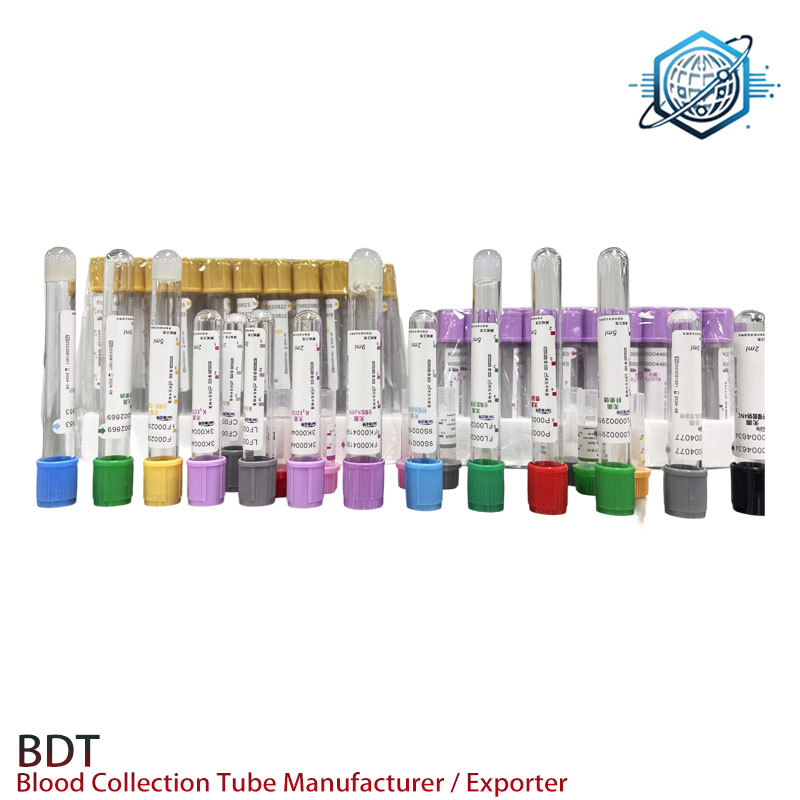Jul . 25, 2025 08:01 Back to list
High-Quality Lithium Heparin Tube for Accurate Blood Collection
In the evolving landscape of blood collection and diagnostics, the lithium heparin tube stands as a critical innovation for accurate plasma analysis. This comprehensive guide explores the industry dynamics, technological parameters, usage scenarios, and manufacturer perspectives relevant to lithium heparin tube, with a special focus on the lithium heparin tube series and products developed by Shijiazhuang BDT Heating Pad Co.,Ltd.



Overview: What is a lithium heparin tube?
A lithium heparin tube is a crucial blood collection device pre-filled with lithium heparin, an anticoagulant agent, ensuring that blood remains unclotted for precise plasma-based diagnostics. Its applications span clinical chemistry, biochemistry assays, hormone levels testing, and more. Empowered by advanced manufacturing, innovations such as the lithium heparin gel tube provide enhanced sample separation and improved workflow efficiency.
Product Highlight: Sodium Fluoride - Lithium Heparin Tube
Shijiazhuang BDT Heating Pad Co.,Ltd.’s leading product, the Sodium Fluoride - Lithium Heparin Tube, encompasses:
- ISO-certified production, ensuring strict quality control and reliability
- Suits a wide range of biochemical assays, particularly glucose and lactate analyses
- Opportunities for exclusive agency worldwide distribution
More about the product: Visit Product Page
Website: https://www.bdtheatingpads.com
Email: bdttonyjiao@hotmail.com
Phone: +8615081115902
Address: 9-1-701 TonfuTown, Shijiazhuang City, Hebei Province, China
Industry Trends: lithium heparin tube Market Evolution and Technology
The global demand for efficient plasma separation and advanced diagnostic accuracy is fueling profound innovation in lithium heparin tube manufacturing. The current market emphasizes:
- Automation compatibility and transportation stability for high-throughput labs
- Gel barrier enhancements, e.g. in lithium heparin gel tube products
- Biocompatibility and safety standards, in line with ISO and EU MDR regulations
- Minimized hemolysis and sample contamination risks
- Customization options for dedicated analytes or automation systems
Global Blood Collection Tube Market Growth (2020–2027)
Technical Parameters: lithium heparin blood collection tubes
| Specification | Standard Value | Industry Range | |
|---|---|---|---|
| Min | Max | ||
| Tube Material | PET/Glass | PET | Glass |
| Vacuum Volume | 2-5ml | 1ml | 10ml |
| Heparin Content | 12 IU/ml | 10 IU/ml | 30 IU/ml |
| Cap Color | Green | Light Green | Dark Green |
| Gel Barrier | Optional/Present | Absent | Double Layer |
| Centrifugation Speed | 1300–2000g | 1000g | 3000g |
| Temperature Stability | 4–25°C | 0°C | 37°C |
lithium heparin tube used for: Typical Application Scenarios
- Clinical Chemistry – Electrolyte, glucose, and enzyme testing, using the lithium heparin blood collection tubes
- Cardiac Biomarker Analysis – Troponin, CK-MB, BNP measurement
- Therapeutic Drug Monitoring – Antibiotics, anti-epileptics, anti-coagulants
- Metabolic Panels – Basic and comprehensive metabolic panels
- Endocrine Testing – Hormone, vitamin, and peptide level analysis
- Oncology Diagnostics – Markers, e.g., PSA, CEA, AFP
- Pediatric and Geriatric Blood Collection – Smaller volume heparin tubes
Comparison and Visualization: Sodium Fluoride - Lithium Heparin Tube Metrics
Expert FAQ: Professional Terms in lithium heparin tube Production & Use
1. What is the primary material used in manufacturing lithium heparin blood collection tubes?
The main materials are medical-grade PET (polyethylene terephthalate) or borosilicate glass. PET is preferred for its shatter resistance, biological inertness, and lightweight handling.
2. How is anticoagulant dosage standardized?
Lithium heparin tube anticoagulant fill is calibrated (typically 12 IU/ml of blood) and complies with standards such as ISO 6710 and CLSI GP39.
3. What is the function of the gel barrier in lithium heparin gel tube types?
The gel barrier facilitates clear phase separation between plasma and cellular elements after centrifugation, improving sample purity and automation compatibility (Clinical Chemistry and Laboratory Medicine).
4. What cap color coding is adopted?
Universally, lithium heparin blood collection tubes feature a green or light-green cap, per industry recommendations for safe identification.
5. Are there standard dimensions/sizes for lithium heparin tube use?
Standard tube sizes include 13x75mm (2–3ml) and 13x100mm (4–6ml), though customization is available.
6. What is the optimal centrifugation protocol?
Typical protocols: 1500g, 10 minutes at 4–25°C, per AACC recommendations.
7. How do lithium heparin tubes ensure regulatory compliance?
ISO- and CE-certification, batch traceability, and validation experiments ensure every tube meets analytical, clinical, and safety standards.
EEAT: Authoritativeness & References from Industry Forums / Journals
- Kost GJ, Guidelines for Blood Collection Tube Standards – PMC (NIH)
- Gel Barrier Effects on Plasma Tubes – Clinical Chemistry and Laboratory Medicine
- AACC Guidance: Blood Collection Tubes and Lab Results
- LabCE: Lithium Heparin Tubes Guide
- ResearchGate Forum: Uses of Lithium Heparin Tubes
- LabMedica: Blood Collection Tubes Overview
-
Home Foot Warmer – Heated, Large & Deluxe Options for Ultimate Comfort
NewsJul.26,2025 -
Capillary Collection Tubes for Accurate Blood Sampling and Testing
NewsJul.24,2025 -
High-Quality Sodium EDTA Tube for Accurate Blood Collection
NewsJul.23,2025 -
High-Quality Serum Separator with Clot Activator for Accurate Testing
NewsJul.22,2025 -
Affordable K3 EDTA Tube Price | Blood Collection Tubes
NewsJul.22,2025














